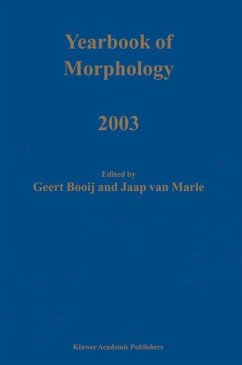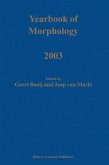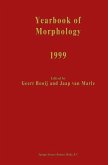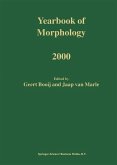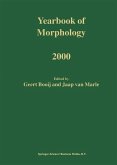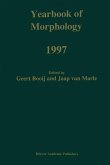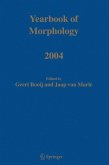A revival of interest in morphology has occurred during recent years. The Yearbook of Morphology series, published since 1988, has proven to be an eminent support for this upswing of morphological research, since it contains articles on topics which are central in the current theoretical debates, and which are frequently referred to. Thus it has set a standard for morphological research.
In the Yearbook of Morphology 2003 a large number of articles is devoted to the phenomenon of complex predicates consisting of a verb preceded by a preverb. Such complex predicates exhibit both morphological and syntactic behaviour, and thus form a testing ground for theories of the relation between morphology and syntax. Evidence is presented from a wide variety of languages including Germanic, Romance, Australian, and Uralic languages. A number of articles present historical evidence on the change of preverbal elements into prefixes. Topics such as grammaticalization, constructionalidioms, and derivational periphrasis are also discussed.
In addition, this Yearbook of Morphology contains articles on morphological parsing, and on the role of paradigmatical relations in analogical change.
In the Yearbook of Morphology 2003 a large number of articles is devoted to the phenomenon of complex predicates consisting of a verb preceded by a preverb. Such complex predicates exhibit both morphological and syntactic behaviour, and thus form a testing ground for theories of the relation between morphology and syntax. Evidence is presented from a wide variety of languages including Germanic, Romance, Australian, and Uralic languages. A number of articles present historical evidence on the change of preverbal elements into prefixes. Topics such as grammaticalization, constructionalidioms, and derivational periphrasis are also discussed.
In addition, this Yearbook of Morphology contains articles on morphological parsing, and on the role of paradigmatical relations in analogical change.
From the reviews: "All of these articles reflect the "cutting edge" of morphological research, making this volume, like its predecessors in the same series, an important acquisition for any linguist or librarian serious about keeping pace with morphological theory." (Edward J. Vajda, LANGUAGE, June 2005)

